Wildlife of the Czech Republic
|
In August of 2006 I spent a week in the Czech Republic,
attending the
Czech International Air Fair and visiting many of the scenic Highlights
of the Czech Republic. I didn't have much time left over
for tracking down and photographing wildlife, but I did find some interesting
critters in the forests and fields around Karlstejn castle.
|
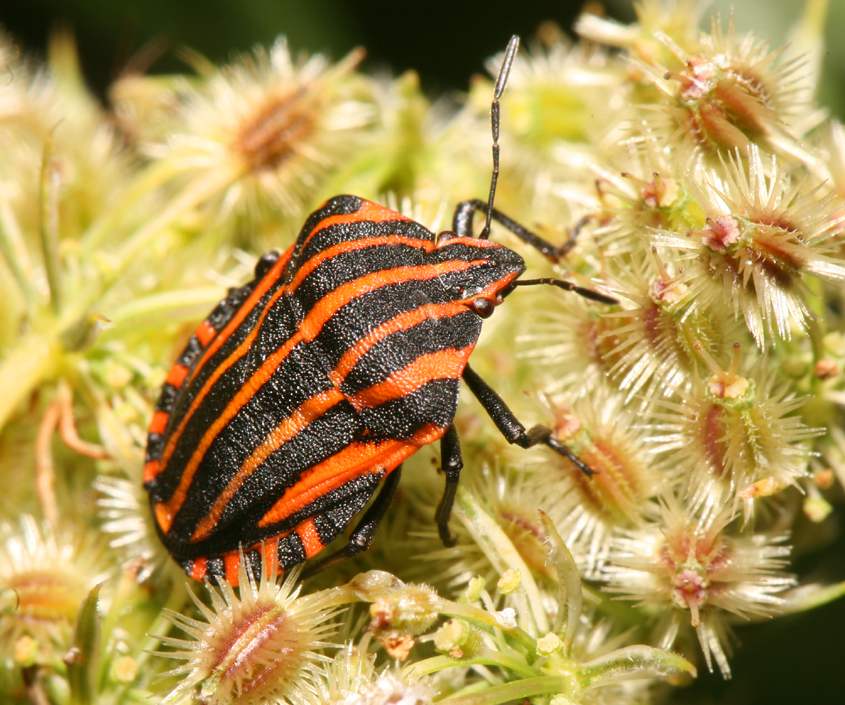
|

|
This brightly clad insect is a red-and-black striped shield bug (Graphosoma lineatum), which
belongs to a family of insects better known as stink bugs! This one didn't
unleash its chemical arsenal on me, but the very visible markings suggests
that this is a particularly toxic bug, the colors being a vivid hint to
birds that it is highly distasteful.
|
 |

|
This Burgundy snail (Helix pomatia) is certainly more tasteful, just ask any Frenchman!
It's also known as the Roman snail or edible snail, and is the species normally served as escargot. They
can live up to 35 years and the shell can be 50mm (2 inches) across. If that doesn't
seem like much then just look at the tiny little snail in front of it! They're native to Central Europe,
but the Romans introduced them to Great Britain and Northern Europe, and they were later brought to Russia and Scandinavia.
|
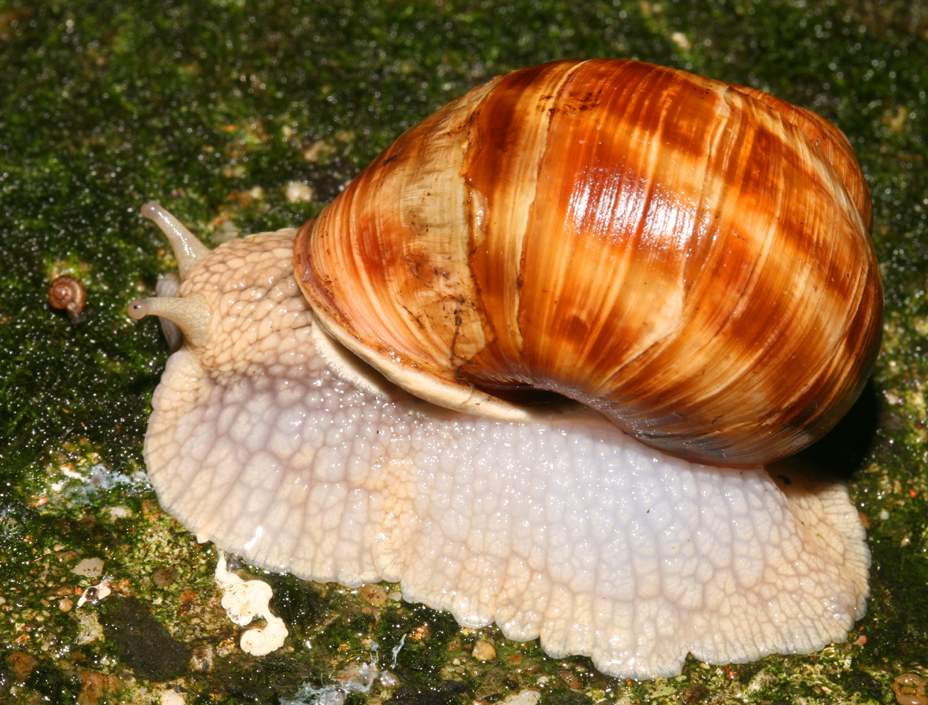
|

|
There were plenty of these dung beetles walking around the forest floor, its
scientific name is Geotrupes stercorarius, but it has several common
English names including dor beetle, dumble dor and lousy watchman.
As you can see it's mostly black, though some have a bluish sheen and the
spines on its legs are certainly impressive.
|
 |

|
Here's another individual of the same species, showing off its attractive blue
coloration. I'm not sure why it climbed onto this mushroom,
but this particular beetle looks like it has some real fungus problems
of its own, judging by the fluffy grey stuff on its right-hand legs.
This might be a mould which will eventually kill and consume the beetle,
quite a common occurrence in the insect world.
|
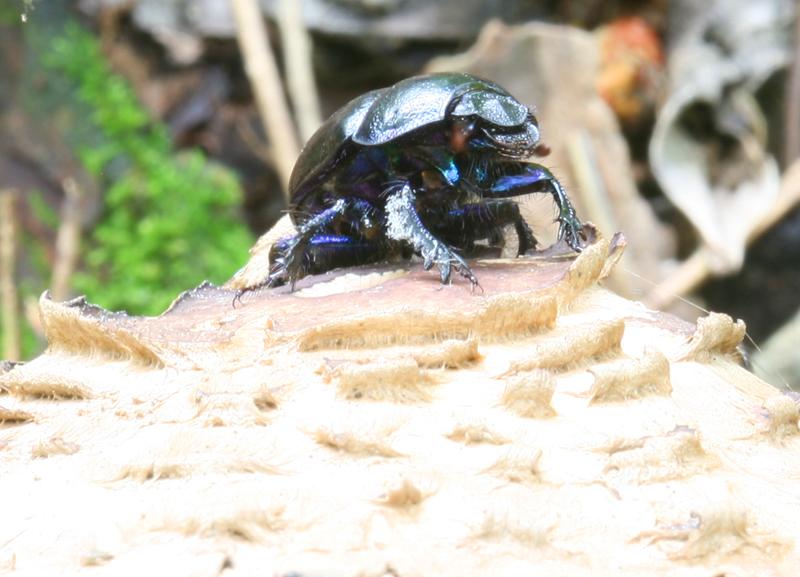 |

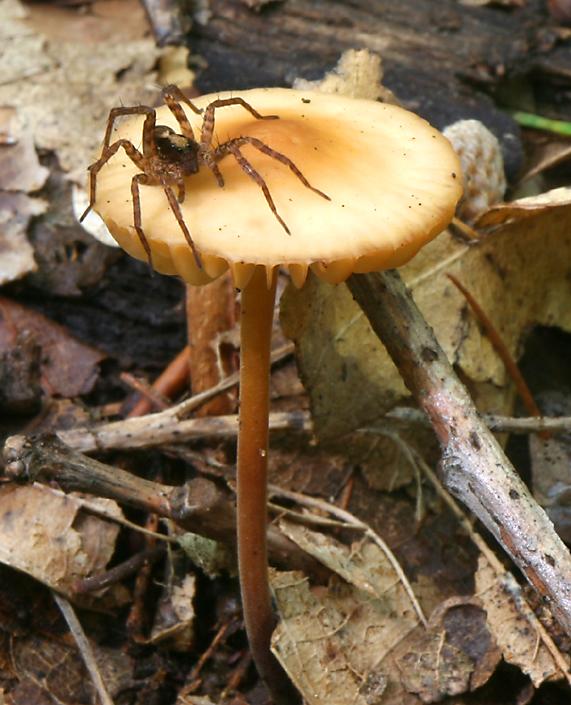
The beetle wasn't the only bug taking some time out on a mushroom.
This wolf spider was probably just wandering around looking for something
to eat, rather than find a high perch from which to hunt. Wolf
spiders hunt by prowling around, so they have better eyesight than most
orb weavers, however it's highly unlikely that they could track and capture
prey from a position like this.
|

|
I didn't see many birds, but while I was at the castle a flock of blue tits
arrived, twittering and crawling all around the trees, looking for insects
to eat.
|
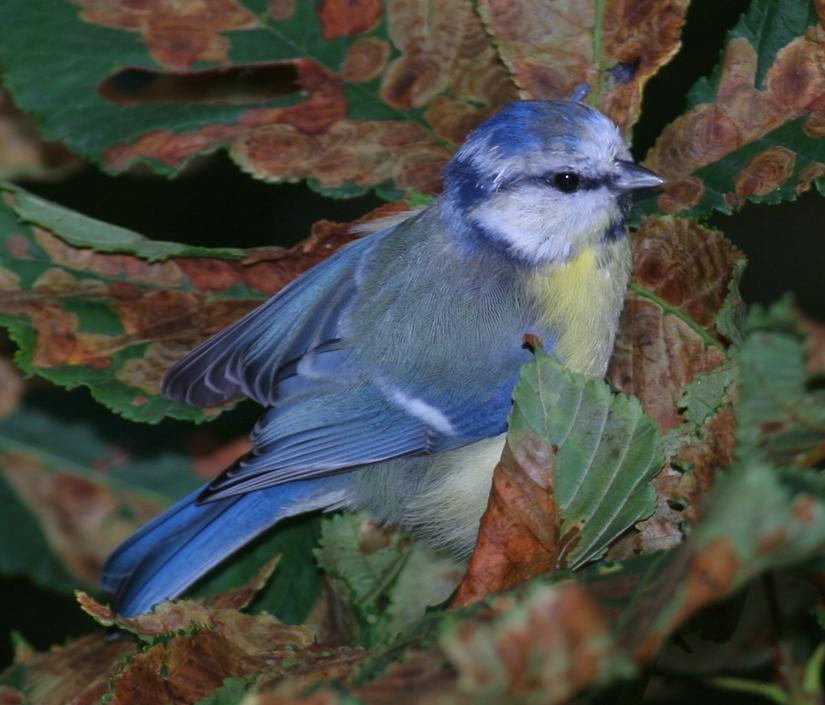
|

|
This fire salamander was without doubt the wildlife highlight of my trip to
the Czech Republic. It was a very dark and damp day, which
was not so good for photographing the castle, but turned out to be ideal
conditions to bring this little amphibian out of hiding. I
did have to scramble up a very steep little mud bank to get to it, and
I got very muddy sliding back down afterwards but I thought it was well
worthwhile, especially because this was the first salamander I've ever
seen anywhere.
|
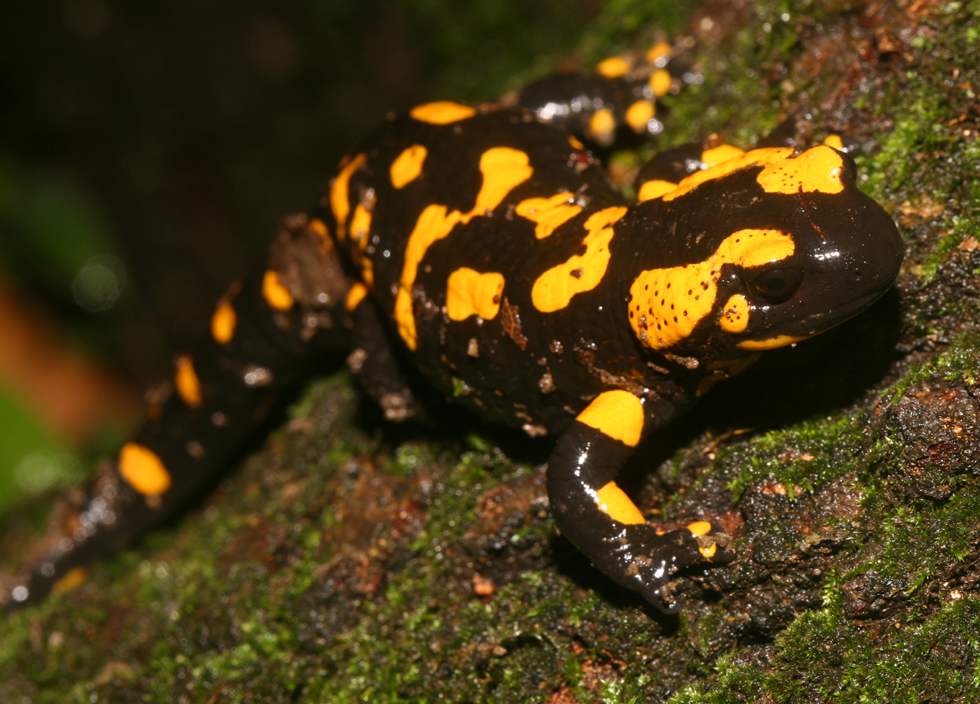
|







